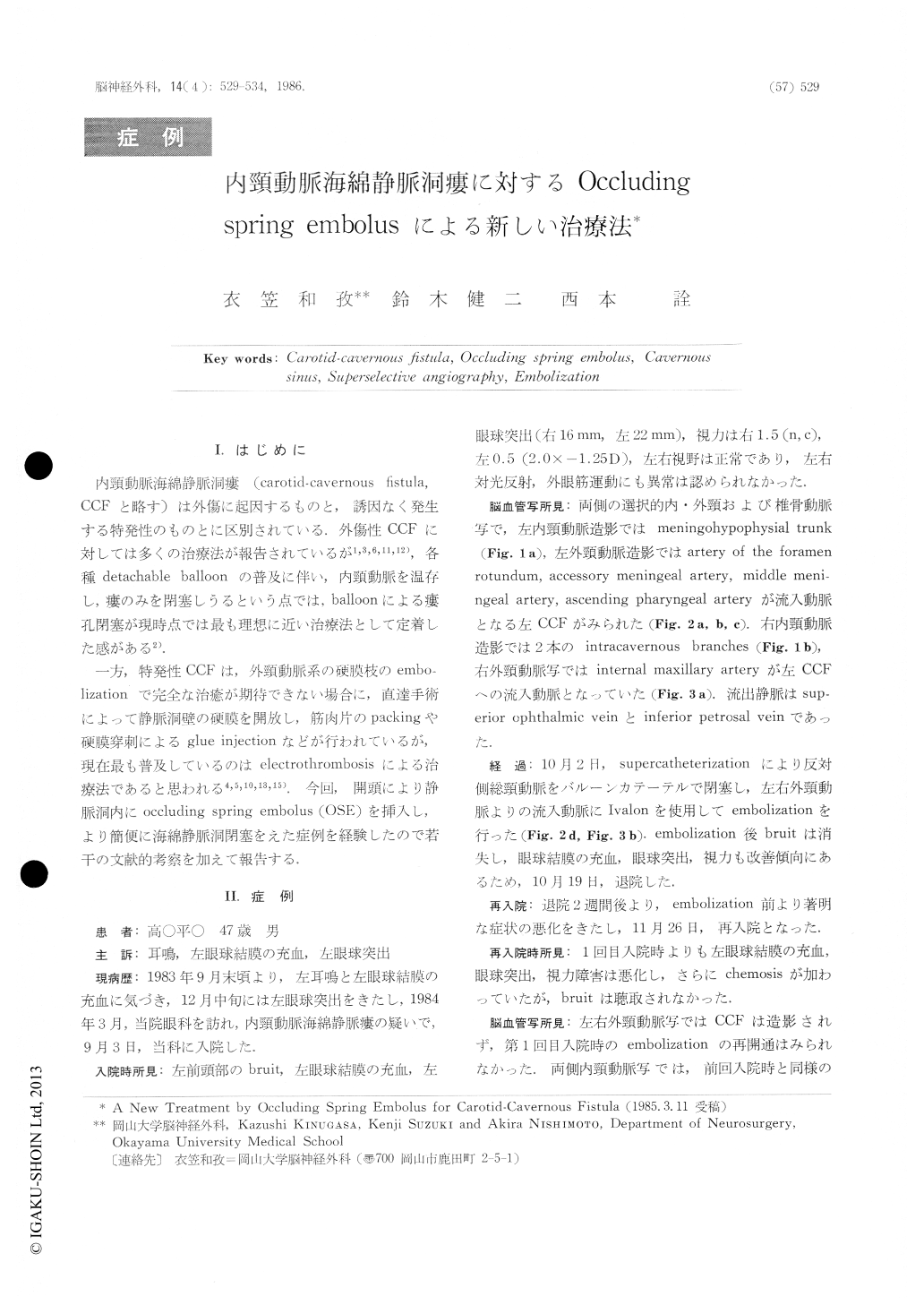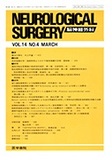Japanese
English
- 有料閲覧
- Abstract 文献概要
- 1ページ目 Look Inside
I.はじめに
内頸動脈海綿静脈洞瘻(carotid-cavernous fistula,CCFと略す)は外傷に起因するものと,誘因なく発生する特発性のものとに区別されている,外傷性CCFに対しては多くの治療法が報告されているが1,3,6,11,12)の,各種detachable ballonの普及に伴い,内頸動脈を温存し,瘻のみを閉塞しうるという点では,ballonによる瘻孔閉塞が現時点では最も理想に近い治療法として定着した感がある2).
一方,特発性CCFは,外頸動脈系の硬膜枝のembo-lizationで完全な治癒が期待できない場合に,直達手術によって静脈洞壁の硬膜を開放し,筋肉片のparckingや硬膜穿刺によるglue injectionなどが行われているが,現在最も普及しているのはelectrothrombosisによる治療法であると思われる4,5,10,13,15).今回,開頭により静脈洞内にoccluding spring embolus (OSE)を挿入し,より簡便に海綿静脈洞閉塞をえた症例を経験したので若干の文献的考察を加えて報告する.
The authors describe a new technique for simple, direct and safe obliteration of a carotid cavernous fistula (CCF) with occluding spring embolus (OSE), preserving the carotid artery flow.
The patient was 47 year-old man who was admitted to our department on September 3, 1984 complaining of left conjunctival injection, exophthalmos and bruit at the left temporal region. Angiograms revealed a typical cavernous dural AVM (spontaneous CCF) on the left side with bilateral dural ECA-ICA blood supply. He was treated with transvascular Ivalon embolization of the bilateral ECA.

Copyright © 1986, Igaku-Shoin Ltd. All rights reserved.


